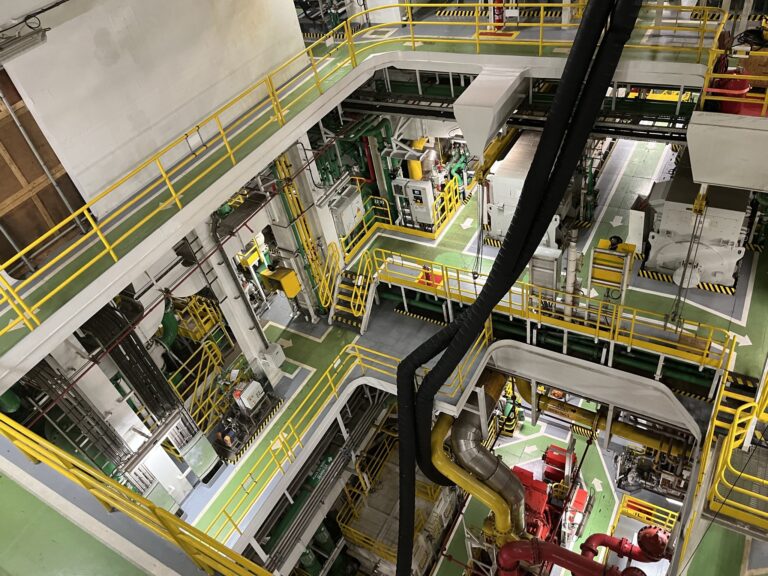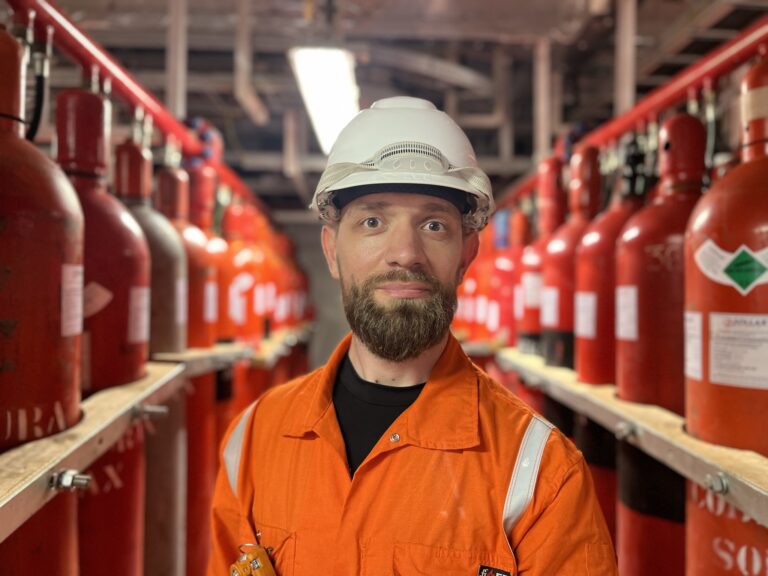Global Survival Technology solutions provider Survitec released today the results of pioneering tests conducted on high-pressure CO2 fire extinguishing systems aboard three Floating Production Storage and Offloading (FPSO) vessels.
The full-release tests, believed to be the first to be conducted on vessels of this type and of such protected volume, confirmed the value to shipyards and ship operators of live testing to verify on-paper or on-screen predictions of fire system performance.
Michał Sadzyński, Product Manager, Survitec, said: “The important take-home for the industry here is that some of the protected spaces did not pass the tests the first time. This suggests there may be other vessels and offshore structures out there with potentially underperforming CO2 fire extinguishing systems in fire-critical areas such as switchboard rooms, engine rooms and generator houses.”
The tests were conducted as per NFPA’s (National Fire Protection Agency’s) NFPA12 Standard on Carbon Dioxide Extinguishing Systems, published in 2011, allowing a calculation-based prediction of system performance. This was upgraded by NFPA in 2018 to a much stronger standard and regulations advocating live, full discharge testing of all cylinders along with the constant monitoring of CO2 and oxygen concentrations over a 20-minute period in all protected spaces.
Survitec has designed and released a new set of test protocols (HPCO2) around the most recent annexes to the NFPA12 standard, with these initial tests on the three FPSOs conducted in a variety of scenarios and vessel operations from moored in the oil field to within the shipyard delivering the conversion.
“The devised live test comes as close as is practical to creating the demands of an actual fire aboard. On large vessels like FPSOs, it involves opening hundreds of cylinders – for example, in the engine room of one of these FPSOs, 315 cylinders were released,” revealed Sadzyński.
“We have found that the release of large amounts of highly pressurised gas into a partially closed space usually uncovers some engineering challenges within the protected space, rather than with the delivery system itself,” he said.
Survitec saw this most clearly in the switchboard room test aboard the first FPSO to be tested, where the space was gas-tight due to the unrelated system requirements for the air conditioning system.
During the live test, the rapid pressure increases in the space found the weakest point, which in this case was the door, causing damage. This damage reduced the gas integrity of the space, allowing CO2 gas to escape, leading to test failure.
On the second FPSO, another key finding was that a machinery space or compartment cannot always be assumed to be airtight. In one test, the gas collecting inside the space started to escape through leaks, leading to a drop in concentration and test failure.
As Sadzyński explained, “There are often relatively simple and inexpensive fixes in these scenarios. Overpressure in air-conditioned spaces can be resolved by implementing a time delay on one of the fire dampers. This allows over-pressurised gas to escape from the space and then closes when the pressure becomes stable, thereby keeping the CO2 concentration at the required level. This was the solution for the switchboard room on the first vessel to be tested.”
There is, of course, an expense associated with full-release testing as the CO2 cylinders are completely exhausted in the test and require replacement to recharge the system. Additionally, CO2 is not a human-friendly gas, so if the vessel is in operation, all personnel or crew need to be relocated to a safe space. But as Sadzyński acknowledged, the consequence of operating a system that fails to perform in a real-world scenario could be catastrophic.
“It is important to emphasise that designing a vessel is a highly complex process, encompassing hull structure, compartment layouts, ventilation systems and so on, which all interlink with the design of the fire suppression systems. As the build progresses, any amendments or deviations that are introduced can have unforeseen consequences that impact system performance – the most critical being the failure of a fire extinguishing system during emergency firefighting operations.
“This study shows very clearly the limitations of modelling the performance of a fire suppression system within a virtual environment at the vessel design stage versus a real-world test.”
“For safety-critical vessels in particular, such as FPSOs, tankers and gas carriers, we encourage shipyards and owners to consider additional safeguards, such as live discharge testing, as proposed in the new guidelines. The guidelines are there not only to protect lives better but also assets. The data collected from these tests are invaluable in helping us design even better and more efficient fire suppression systems.”
[ENDS]


About Survitec
Survitec is a global Survival Technology leader to the maritime, defence & government, aerospace and energy sectors. Survitec has over 3,000 employees worldwide, covering 11 manufacturing facilities and over 400 service centres. They operate in over 2,000 ports, spanning 96 countries. Survitec are the world’s largest manufacturer and supplier of liferaft, Marine Evacuation Systems (MES) and offshore rental PPE. They are a leading supplier of fire solutions to the maritime industry and hold a market leading position for Pilot Flight Equipment in the aerospace & defence market. The Survitec team live by their purpose “We Exist to Protect Lives”. Throughout its 168-year history, Survitec has remained at the forefront of innovation, design and application engineering and is the trusted name when it comes to critical safety and survival solutions. www.survitecgroup.com

